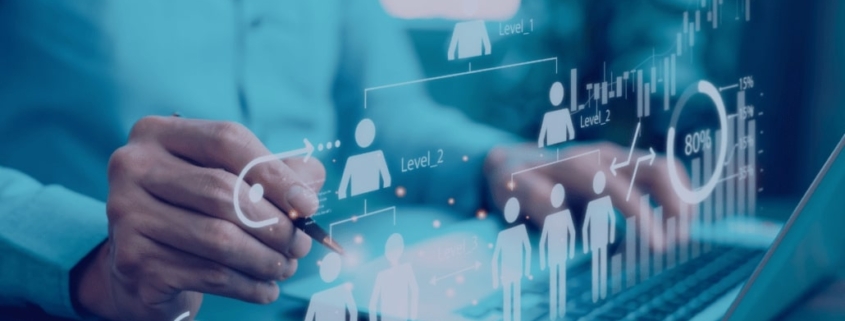How AI-driven insights are helping companies predict future workforce needs
In an era where change is the only constant, companies are under increasing pressure to stay ahead of workforce challenges that evolve as rapidly as the industries they serve. From shifting market demands to technological disruptions and demographic changes, the need for smarter, more strategic workforce planning has never been greater. As a recruitment agency in Cape Town, we know that traditional forecasting methods—often based on outdated models and manual processes—simply can’t keep up. That’s where Artificial Intelligence (AI) comes in. AI-driven insights are transforming how businesses prepare for the future, enabling them to anticipate talent needs, close skill gaps, and build agile, future-ready teams with precision and speed. This blog explores how AI-driven insights predict workforce needs, turning reactive guesswork into proactive, data-informed decision-making.
The evolution of workforce planning
Historically, workforce planning relied heavily on manual processes and retrospective analyses. Human resource departments would assess past performance, employee turnover rates, and market trends to forecast staffing needs. While these methods provided a foundational approach, they often lacked precision and adaptability, leading to either overstaffing or understaffing scenarios.
AI’s role in modern workforce planning: A deep dive into intelligent transformation
In an age where data is king and adaptability is the key to competitive advantage, Artificial Intelligence (AI) is stepping into the spotlight to revolutionize how companies approach workforce planning. No longer limited to guesswork or static spreadsheets, today’s leading organizations are using AI-driven insights to proactively anticipate staffing needs, optimize operations, and align talent with future goals.
Here’s how AI is fundamentally transforming the landscape of workforce planning—and how it’s being done behind the scenes:
1. Predictive analytics for demand forecasting
AI begins its magic with predictive analytics—a form of advanced analysis that uses historical and real-time data to forecast what’s likely to happen in the future.
Using machine learning algorithms, AI systems analyze massive datasets, including:
- Past hiring trends
- Employee turnover rates
- Company performance indicators
- Industry benchmarks
- Economic indicators (e.g., inflation rates, unemployment levels)
- Seasonal and market fluctuations
For example, if a retail company experiences consistent spikes in sales every November and December, AI can identify this pattern and recommend a ramp-up in hiring temporary staff several months in advance. Similarly, if a surge in a particular technology (like AI itself or cybersecurity) is detected across the market, the system can flag this trend and suggest hiring more candidates with those specific skill sets.
The result? Companies can anticipate labor shortages or surpluses before they occur—and adjust their recruitment and training strategies with precision.
2. Identifying Skill Gaps and Training Needs
AI doesn’t just focus on hiring; it also plays a pivotal role in reskilling and upskilling the current workforce.
Here’s how it works:
- AI systems scan internal HR data (employee performance reviews, completed training modules, job descriptions, certifications, etc.)
- These insights are then compared to industry-standard skill requirements and emerging job roles using real-time labor market analytics.
- The AI pinpoints gaps in current employee capabilities versus what will be required in the near future.
- Once these gaps are identified, the system can recommend personalized training programs, online courses, and internal mentorship opportunities tailored to individual employees.
Companies like IBM use such AI-powered tools to create dynamic learning paths, ensuring their workforce evolves with changing job demands. This not only boosts employee development but also saves on external hiring costs by promoting internal mobility.
3. Enhancing Recruitment Strategies with Intelligent Automation
Recruitment is no longer a manual slog of resume reviews and phone screens. AI now plays an integral role in automating and enhancing every stage of the talent acquisition funnel.
Here’s how AI optimizes recruitment:
- Resume Screening: Natural Language Processing (NLP) enables AI to read and parse thousands of resumes quickly, identifying key skills, qualifications, and experiences.
- Candidate Matching: AI matches candidates to open roles based on compatibility scores derived from job descriptions and profile data.
- Chatbots and Virtual Assistants: Tools like MASA’s intelligent bots can engage with candidates 24/7, answer FAQs, and pre-screen applicants through automated interviews.
- Predictive Fit Models: AI systems can forecast how successful a candidate will be in a role by analyzing factors like cultural fit, prior performance data, and even communication patterns.
The outcome? Shorter time-to-hire, improved candidate experience, and higher retention rates because hires are better aligned with the company’s needs and culture.
4. Optimizing workforce scheduling and resource allocation
AI excels at managing complex variables—and that’s exactly what’s required in workforce scheduling.
In industries like healthcare, hospitality, logistics, and manufacturing, where shift work and variable staffing are the norms, AI helps:
- Factor in employee availability, skills, time-off requests, and labor laws
- Analyze historical project timelines, peak hours, and absenteeism patterns
- Generate optimal shift schedules that reduce overstaffing or understaffing
- Improve work-life balance by honoring employee shift preferences
What’s more, when unexpected changes occur (like someone calling in sick), AI systems can immediately reassign tasks or fill in gaps by suggesting suitable replacements—keeping operations running smoothly without a hitch.
5. Strategic Succession Planning with Predictive Modeling
Succession planning has traditionally been a subjective, manual process—but AI adds data-driven objectivity and accuracy to it.
Here’s how:
- AI analyzes employee performance data, tenure, learning agility, and leadership potential over time.
- It identifies which team members are likely to excel in leadership roles in the future.
- AI simulates different “what-if” scenarios to assess leadership pipelines under various business conditions.
- For instance, if a key manager is likely to retire in two years, the system can recommend grooming two or three high-potential employees with overlapping skills, starting today. This ensures no disruption in leadership continuity and prepares companies to scale without being caught off guard.
AI-driven workforce planning tools are not just about technology—they’re about intelligent decision-making powered by real-time data. Whether it’s forecasting demand, closing skills gaps, recruiting faster, optimizing schedules, or preparing for leadership transitions, AI provides a strategic advantage that traditional methods simply can’t match.
And here’s the best part: these systems get smarter over time. The more data they analyze, the more accurate they become, but they are not without their challenges.
Challenges and considerations
While AI offers significant advantages, organizations must address certain challenges:
- Data Privacy and Security: Handling sensitive employee data requires robust security measures to prevent breaches and ensure compliance with regulations.
- Bias and Fairness: AI systems can inadvertently perpetuate existing biases present in training data, leading to unfair treatment of certain employee groups. Implementing fairness-aware algorithms and regular audits is essential to mitigate this risk.
- Change Management: Integrating AI necessitates a cultural shift within the organization. Employees may resist adopting new technologies due to fear of job displacement or lack of understanding. Effective communication and training programs are vital to facilitate this transition.
Preparing today for the workforce of tomorrow
As the workplace continues to evolve, one thing is abundantly clear: organizations that leverage AI-driven insights in their workforce planning are positioning themselves for long-term success. From accurately forecasting hiring needs to identifying skill gaps, automating recruitment, optimizing scheduling, and ensuring leadership continuity, AI empowers businesses to make smarter, faster, and more informed decisions. While the journey to AI integration comes with challenges—like data security, bias mitigation, and change management—these are manageable with the right strategy and support.
The future of workforce planning is proactive, not reactive. It’s dynamic, data-driven, and deeply human at its core—enabled by technology but designed to help people thrive. If your business is ready to make this shift and stay ahead of the curve, now is the time to embrace AI-powered planning.
Visit MASA’s homepage to discover how our innovative staffing solutions can equip your business for the future.



